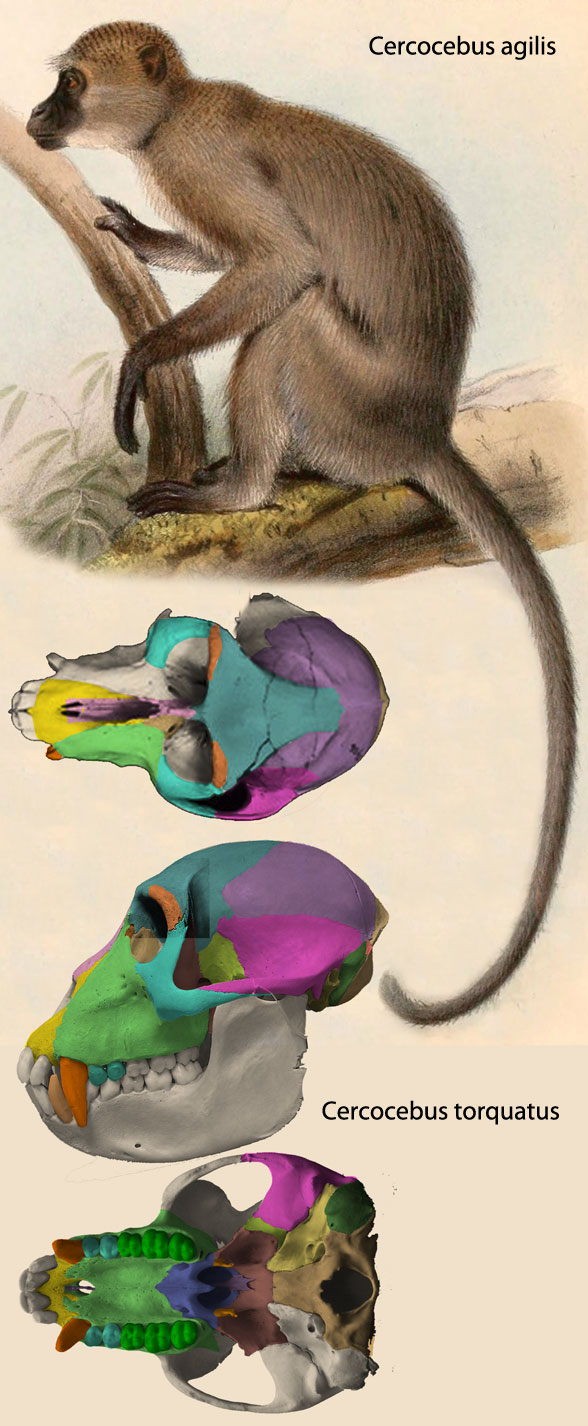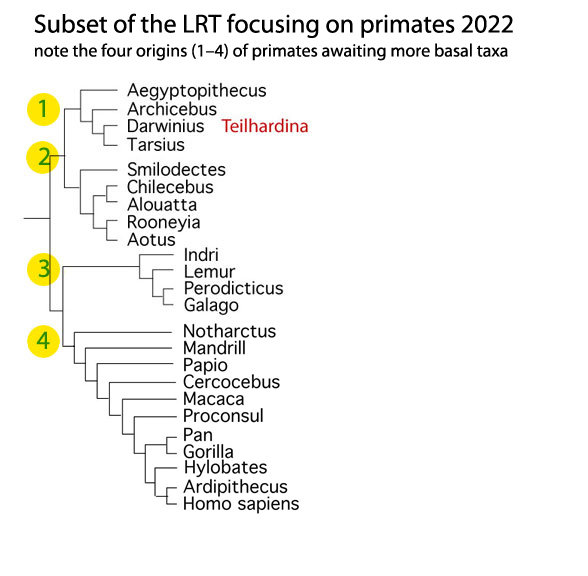No surprises here.
The African mandrill (genus: Mandrill, Figs 1, 2) and the African white-eyelid mangabey (Cercocebus, Fig 3) enter the large reptile tree (LRT, 2064 taxa, subset Fig 4) today between extinct adapids, like Notharctus, and extant rhesus monkeys, like Macada.
They say that baboons, like Mandrill
(Fig 2), are notable for retaining lemur-like claws, rather than developing nails, as in monkeys, like Cercocebus (Fig 3), and apes.
Mandrill sphinx
(Linneaus 1758, Figs 1, 2)) is traditionally related to the monkey Cercocebus according to genomic studies. Here extant Mandrill nests between Notharctus and Papio, the baboon, closer to lemurs than to monkeys, like Cercocebus (Fig 3).
Cercocebus torquatus
(Geoffroy Saint-Hilaire 1812, Fig 3)) is the extant collared mangabey, one of the white-eyelid Old World monkeys, here nesting between Papio and Macaca.
The addition of these two taxa
coincided with the reexamining of several scores related to the presence or absence of a vestigial prefrontal in related taxa. That shifted the tree topology of the LRT (subset Fig 4) moving Rocky Mountain Notharctus closer to the African apes. Lacking a basalmost taxon, the LRT now splits primates into four clades at their origin. Smilodectes is also from North America, giving rise to South American monkeys. Aegyptopithecus and Indri are African. According to the LRT primates are worldwide when we first meet them in the LRT.
Now we need a basalmost primate for the LRT,
one that more closely resembles outgroup taxa like the extant coatimundi, Nasua, a basalmost placental. It is interesting to note that the coatimundi is native to North America. Perhaps that is where we should look for the first radiation of primates in the Jurassic to Cretaceous. Primates eventually spread world wide during the warm Eocene, then reduced their territory to equatorial areas prior to the ascendancy of Homo sapiens.
References
Geoffroy Saint-Hilaire E 1812. Description des mammiferes qui se trouvent en
Egypte, Description de l’Egypte. II: Mammalia. L’Imprimerie Imperiale, Paris, 752 pp.
Linnaeus C 1758. Systema naturæ per regna tria naturæ, secundum classes, ordines, genera, species, cum characteribus, differentiis, synonymis, locis. Tomus I. Editio decima, reformata.





